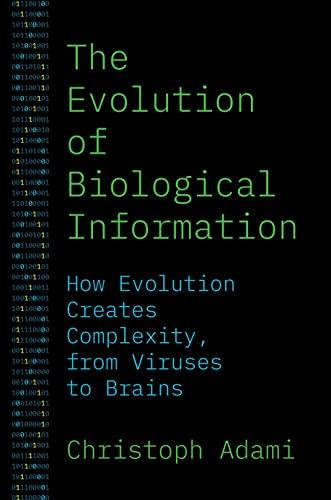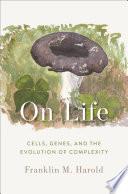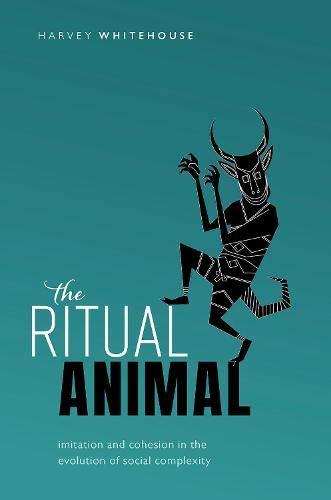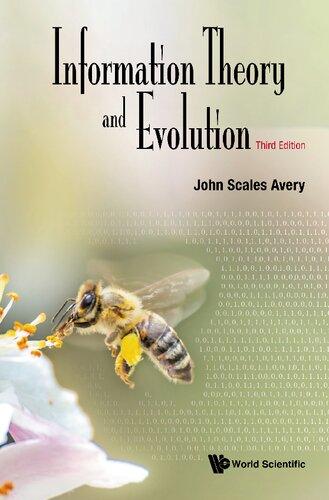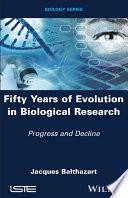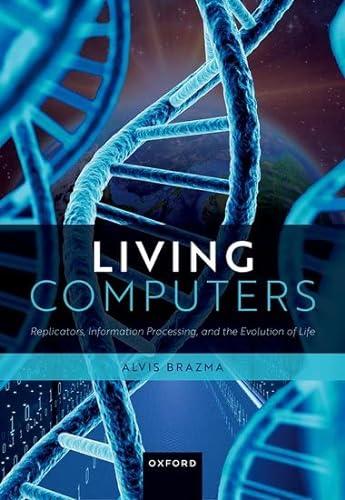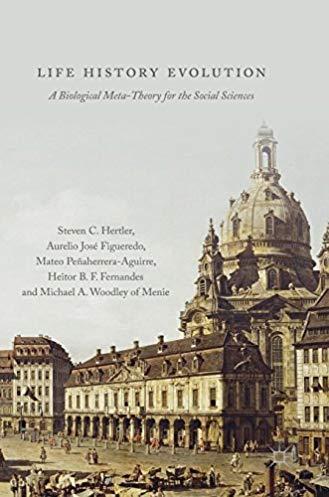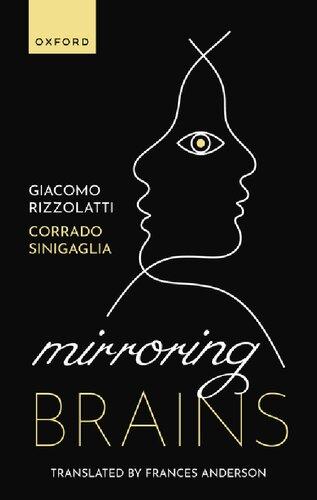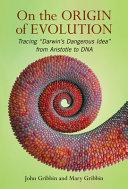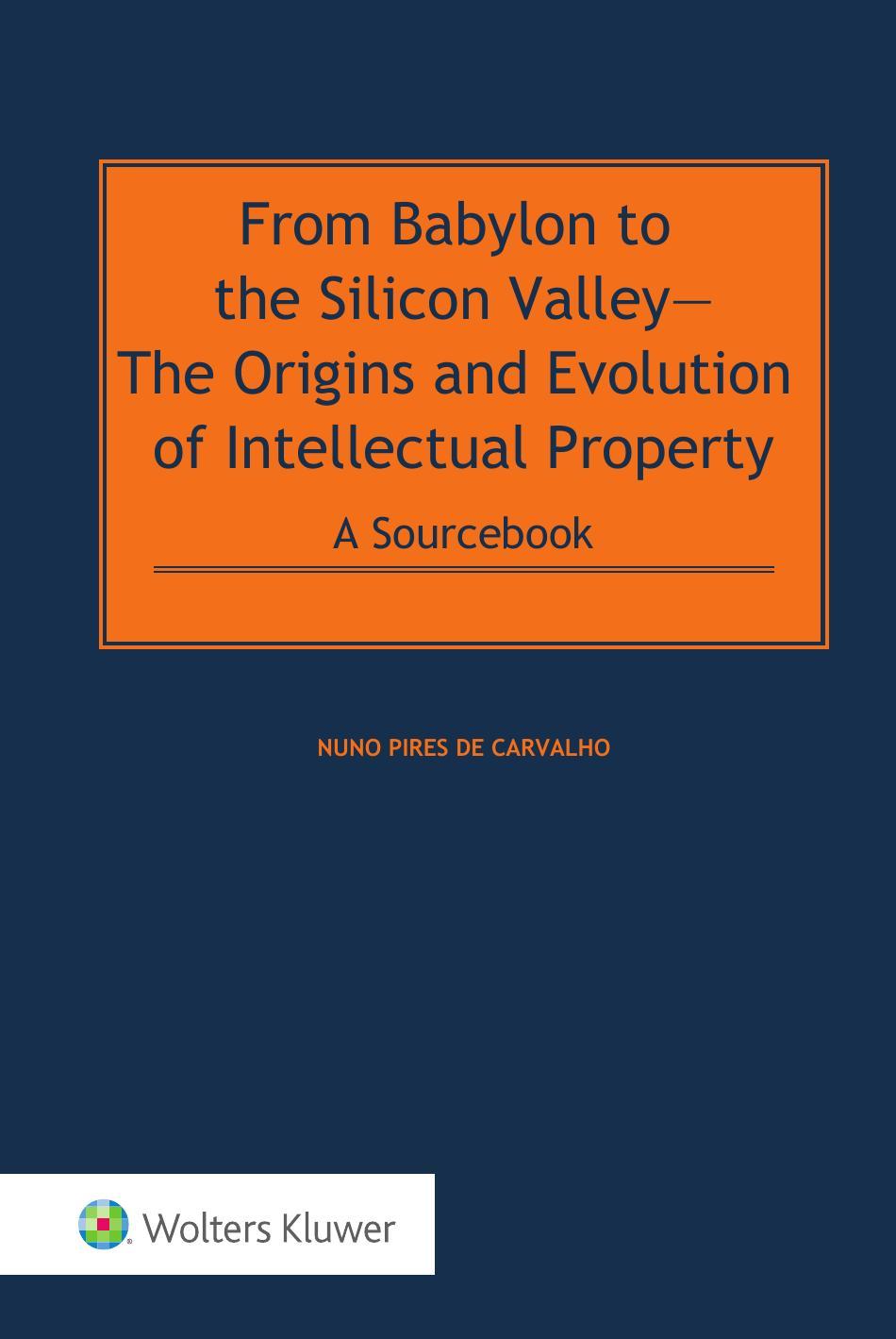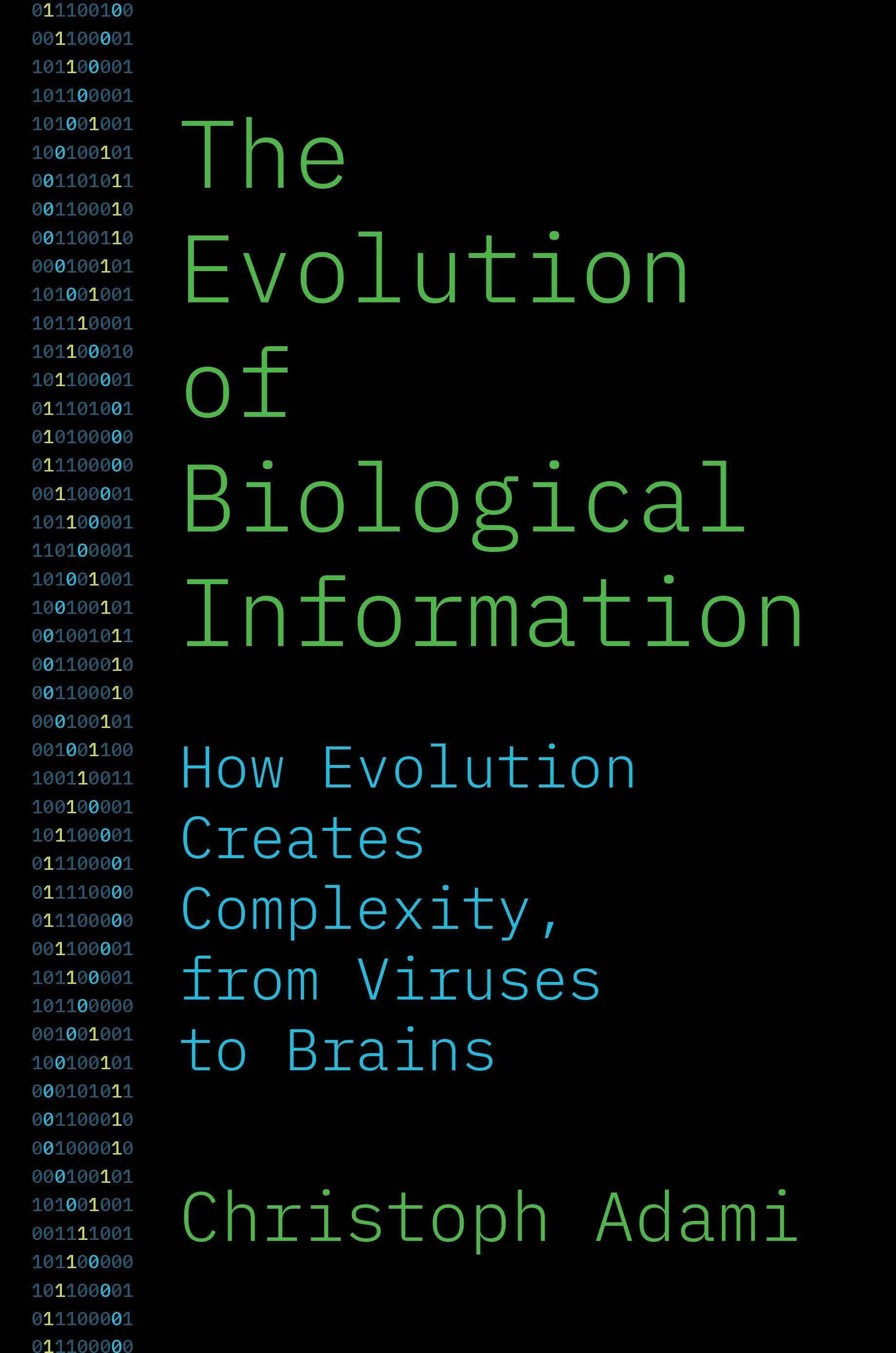Visit to download the full and correct content document: https://ebookmass.com/product/the-evolution-of-biological-information-how-evolutioncreates-complexity-from-viruses-to-brains-christoph-adami/
More products digital (pdf, epub, mobi) instant download maybe you interests ...
On Life: Cells, Genes, and the Evolution of Complexity
Franklin M. Harold
https://ebookmass.com/product/on-life-cells-genes-and-theevolution-of-complexity-franklin-m-harold/
The Ritual Animal: Imitation and Cohesion in the Evolution of Social Complexity Harvey Whitehouse
https://ebookmass.com/product/the-ritual-animal-imitation-andcohesion-in-the-evolution-of-social-complexity-harvey-whitehouse/
Information Theory and Evolution, 3rd Edition John
Avery
https://ebookmass.com/product/information-theory-andevolution-3rd-edition-john-avery/
Fifty Years of Evolution in Biological Research: Progress and Decline Jacques Balthazart
https://ebookmass.com/product/fifty-years-of-evolution-inbiological-research-progress-and-decline-jacques-balthazart/
Living Computers: Replicators, Information Processing, and the Evolution of Life Prof Alvis Brazma
https://ebookmass.com/product/living-computers-replicatorsinformation-processing-and-the-evolution-of-life-prof-alvisbrazma/
Life history evolution: a biological meta-theory for the social sciences Steven C. Hertler
https://ebookmass.com/product/life-history-evolution-abiological-meta-theory-for-the-social-sciences-steven-c-hertler/
Mirroring Brains: How We Understand Others From the Inside Giacomo Rizzolatti
https://ebookmass.com/product/mirroring-brains-how-we-understandothers-from-the-inside-giacomo-rizzolatti/
On The Origin of Evolution : Tracing ‘Darwin’s Dangerous Idea’ From Aristotle to DNA John Gribbin
https://ebookmass.com/product/on-the-origin-of-evolution-tracingdarwins-dangerous-idea-from-aristotle-to-dna-john-gribbin/
From Babylon to the Silicon Valley : the origins and evolution of intellectual property : a sourcebook Nuno Pires De Carvalho
https://ebookmass.com/product/from-babylon-to-the-silicon-valleythe-origins-and-evolution-of-intellectual-property-a-sourcebooknuno-pires-de-carvalho/
TheEvolutionofBiologicalInformation TheEvolutionof BiologicalInformation HOWEVOLUTIONCREATESCOMPLEXITY, FROMVIRUSESTOBRAINS CHRISTOPHADAMI Copyright © 2024byPrincetonUniversityPress
PrincetonUniversityPressiscommittedtotheprotectionofcopyrightandthe intellectualpropertyourauthorsentrusttous.Copyrightpromotestheprogress andintegrityofknowledge.Thankyouforsupportingfreespeechandtheglobal exchangeofideasbypurchasinganauthorizededitionofthisbook.Ifyouwish toreproduceordistributeanypartofitinanyform,pleaseobtainpermission.
Requestsforpermissiontoreproducematerialfromthiswork shouldbesenttopermissions@press.princeton.edu
PublishedbyPrincetonUniversityPress
41WilliamStreet,Princeton,NewJersey08540 99BanburyRoad,OxfordOX26JX press.princeton.edu
AllRightsReserved
LibraryofCongressCataloging-in-PublicationData
Names:Adami,Christoph,author.
Title:Theevolutionofbiologicalinformation:howevolutioncreates complexity,fromvirusestobrains/ChristophAdami.
Description:Princeton:PrincetonUniversityPress,[2024] | Includes bibliographicalreferencesandindex.
Identifiers:LCCN2022060838(print) | LCCN2022060839(ebook) | ISBN 9780691241142(hardback) | ISBN9780691241159(ebook)
Subjects:LCSH:Informationtheoryinbiology. | Evolution(Biology) | BISAC:SCIENCE/LifeSciences/Evolution | COMPUTERS/Information Theory
Classification:LCCQH507.A3362024(print) | LCCQH507(ebook) | DDC 570—dc23/eng/20230505
LCrecordavailableathttps://lccn.loc.gov/2022060838
LCebookrecordavailableathttps://lccn.loc.gov/2022060839
BritishLibraryCataloging-in-PublicationDataisavailable
Editorial:AlisonKalettandHallieSchaeffer
CoverDesign:HeatherHansen
Production:DanielleAmatucci
Publicity:WilliamPagdatoon
ThisbookhasbeencomposedinArnoPro
Printedonacid-freepaper. ∞
PrintedintheUnitedStatesofAmerica 10987654321
PREFACE Darwin’stheoryofevolutionoccupiesauniqueplaceinthehistoryofscience. Amongthegreatdiscoveriesofthelastfivehundredyearssetinmotionby CopernicusandGalilei,Darwin’stheoryaboutthecommonoriginofallforms oflifeandtheirevolutionrepresentsamajorleapforwardinourunderstandingoftheworld.Alongsidethosediscoveriesinastronomyandphysicsthat concerntheinanimateuniverse,Darwin’stheorystandsoutbecauseitconcernstheoriginsoftheinvestigator himself.Discoveriesabouttheplaceof humankindintimeandspacehavealwaysnecessitatedtheremovalofamental andemotionalbarrier,bothintheoriginatoroftheideaandinthepublicthat receivesthem.Darwin’spropositionisuniqueinhistorybecauseitobliterates thelastvestigesofhumanhubrisanddeclaresuskinwithbacterialslimeand leavesofgrass.LorenEiseley(1958)poignantlyremarks:
Itismygenuinebeliefthatnogreateractofthehumanintellect,nogreater gestureofhumilityonthepartofmanhasbeenorwillbemadeinthe longhistoryofscience.Themarvelliesnotinthefactthatbonesfrom thecavesandrivergravelswererecognizedwithtrepidationanddoubtas beingsfromthehalf-worldofthepast;themiracle,consideringthenature ofthehumanego,occursinthecircumstancethatwewereabletorecognizethematall,ortoseeintheseremotehalf-fearsomecreaturesour long-forgottenfatherswhohadcherishedourseedthroughtheagesofice andlonelinessbeforeasinglelightedcityflickeredoutofthedarknessof theplanet’snighttimeface.
Whilethetheoryofevolutionbynomeansmaterializedoutoftheblue(as Ishalldiscuss)andwhileanassortmentofnaturalistsandscientistsformulatedideassimilartothecentraltenetsofDarwinism,onlyDarwinhimself wroteaboutthemfullyconsciousoftheirworld-shakingimplications.1
1.InaJanuary11,1844,lettertoEngland’smosteminentbotanist,J.D.Hooker,Darwin revealshisapprehensions:“Atlastgleamsoflighthavecome,andIamalmostconvinced(quite contrarytotheopinionIstartedwith)thatspeciesarenot(itislikeconfessingamurder) immutable.”(F.Darwin,1887,p.384)
Amongthecelebratedtheoriesthatconstitutetheframeworkofourknowledgeabouttheworld,Darwinismisuniqueinanotherway.Atthetimeofits inception,thetheoryofevolutionwasbasedsolelyonobservationandlogical deduction,notonempiricalfactsobtainedbyexperimentation.Itisperhaps notunreasonabletoseeDarwinasakintoasleuthingdetective,weighingthe evidenceavailabletohimwhileformulatingandrejectinghypothesisafter hypothesisuntilhittingontheoneexplanationthatisconsistentwithall availablefacts.Whileevolutionarytheorycanbecouchedinabstractterms justasanytheoryinthephysicalsciences,itspredictionscould(atthetime) notbesubmittedtoexperimentaltests,notevenafterthemolecularrevolutionthatbroughtwithitthediscoveryofthegeneticcodeandthemolecular mechanismsgivingrisetovariation.Thisisbecause macroevolution (thatis, speciation,adaptation,andinnovation)wouldhavetakentoolongforthe meticulousexperimentalapproachthat characterizesprogressinthephysical sciences.Macroevolutionarytimescalesareusuallymeasuredinthemillions ofyears,orinthehundredsattheverybest.2
Thisweaknessofevolutionasascientifictheorymustberecognizedasone ofthetwomajorelementsthathavepreventedDarwinismfrombeingfully acceptedbybothscientists(mostofwhomaccepteditalmostinstantly)and thepublicalike.Theotherelementthatconstantlygnawsatthefoundationsof evolutionarytheoryisthecontroversyabouttheexplanation(ornonexplanation)oflife’scomplexity.Thecontroversiesarevaried,battlesarefoughtboth withintheranksofscientiststhatwouldnotdoubtforasecondthevalidityof thecentraltenetsofDarwinism,andwithout,byanincredulouspublicandby entrenchedcreationists.
ExplaininghowDarwinianevolutioncanaccountforthecomplexityoflife (biocomplexity)thusemergesasoneofthelastremainingmajorproblemsin evolutionarybiology.3 Whetherornotcomplexityincreasesinevolution,and ifitdid,whatthemechanismsarethatfuelthisgrowth,isathornyquestion becausecomplexityitselfishistoricallyavagueconcept.Ifdifferentscientists understandcomplexityindifferentways,itisnowonderthatanagreement overthisissuehasnotbeenreached.
Thesetwofactors,whichimpedeafullacceptanceofevolutionarytheory assufficienttoexplainallformsoflifeonEarth,aremoreoverrelated:If experimentscouldbeconductedinwhichcomplexityvisiblyevolvesfrom
2.Butoccasionally,macroevolutionarychangescanbeobservedtooccurinthespanof decades;see,forexample,chapter4.
3.Theotherone,namelytheemergenceandmaintenanceofthesexualmodeofreproduction,hasstirredlessinterestinthegeneralpublic,whileitstillisthesourceofintenseresearch amongevolutionarybiologists.
preface xi
simplicity,thecontroversywouldsurelyshiftfrom“DoesIt?”to“HowDoes It?”InthisbookIshallpulltogethertwostrandsofresearchthatmeethead-on theperceivedvulnerabilitiesofevolutionasacompleteandsatisfyingtheory oforganicorigin,diversity,andcomplexity.Thefirststrandisthefieldof experimentalevolution,adisciplinethatfewcouldhaveimaginedinDarwin’s days,butthattodayhasmaturedintoaquantitativesciencewiththepower of falsification (thehallmarkofscientifictheories)inthelasttwentyyears. Theotheristhetheoreticaldevelopmentofaconceptofcomplexity,rooted inmathematicsandthetheoryofinformation,butgermanetobiology.No mathematicalconceptofcomplexityhashithertosatisfiedbothmathematiciansandbiologistsalike.Bothscientistsandnonscientistshaveanintuitive notionofwhatconstitutescomplexity;we“knowitwhenweseeit.”ThetheoreticalconceptthatIintroduceinthisbookseemstosatisfyourintuitionevery timeitissubjectedtothetest,whichbodeswellforitsacceptanceasameasureforbiocomplexity.Moreover,itprovestobebothpracticalanduniversal. Practical,becauseitimpliesarecipetoattacha number tothecomplexityof anyclassoforganisms(allowinginprincipleacomparisonbetweenspecies), anduniversalbecauseitdoesnotreferatalltonucleicacidsorproteins,or anyotherparticularfeatureofthisworldandtheformsoflifethatpopulate it.Rather,itisbasedontheuniversalconceptsofautomataandinformation theory,whichareabstract.
Amathematicaldescriptionofthemechanismsthatareresponsibleforthe evolutionandgrowthofcomplexity,andexperimentalevidencebuttressing suchadescription,shouldgoalongwaytoeliminatethosedoubtsthatare anchoredaroundthestartlingcomplexityoflifeandtheseeminginabilityof scientifictheorytoaccountforit.Iwilltryinthisbooktoconvincethereader thatitcanbeaccountedfor,bothinabstracttermsandmathematicalformulae,andthatthemechanismsresponsibleforthegrowthofcomplexitycanbe investigatedexperimentallyandbetestedandretested.
Butinformationtheorycandomoreforbiologythanjustprovidefora measureofcomplexity.Inhindsight, everything inbiologyusesinformationin oneformoranother,beitforcommunication(betweencells,ororganisms) orforprediction(viamolecularaswellasneuralcircuits).Asaconsequence, wemustthinkofinformationtheoryastheunifyingframeworkthatallowsus tounderstandcomplexadaptivesystemsfarfromequilibrium,withbiological lifebeingtheprimeexample.
Fromtheprecedingcomments,itshouldbeclearthatthisisnotaconventionalbookaboutevolution.Itisnota“whodunnit”inwhichthecomplicated relationshipbetweenadaptedformsisrevealedthroughelaborategeneticor behavioralexperimentsandobservation.Rather,ittreatsevolutionarytheory asanempiricalscience,inwhichabstractconcepts,mathematicalmodels,and
dedicatedexperimentsplaytheroletheyhavebeenplayinginthephysical sciencesinthelastfewhundredyears.WhileItrytokeepthemathematicalsophisticationtoaminimum,areaderwhowantstomakethemostof thisbookshouldbepreparedtofollowbasicalgebra.Indeed,theconceptof genomiccomplexity—itsacquisitionandevolution—issofirmlyrootedin thetheoryofinformationthatitwouldbeimpossibletobypassanexposition oftheframeworkduetoShannon(1948).Furthermore,molecularevolution theory(duetoEigen1971,EigenandSchuster1979),thetheoryofselfreplicatingmacromoleculesundermutationandselection,isakinetictheory inwhichthetime-dependenceofconcentrationsofmoleculesarekey.Thus, basicnotionsfromcalculuswillberequiredtofollowthosesections.Yet,Ihave strivedtoexplaintheconceptsthatareintroducedmathematicallyalsoin intuitivelanguage,sothatthedynamicsofevolution,andthecircumstances surroundingtheevolutionofcomplexity,shouldappearmoreclearlytoevery seriousreaderinterestedinbiocomplexity.
Anothersomewhatlessconventionalfeatureofthisbookisitsextensiveuseofthemethodsofcomputation.Virtuallyallthephysicalsciences havebranchesnowadaysthatarealmostentirelycomputationalinnature: thepowerofmoderncomputerstotakeinitialdataand,armedwithaset ofequationsthatmodelthesystemunderinvestigation,grindthroughto theconsequenceshasrevolutionizedeveryfacetofmodernscience.Even withinbiology,thecomputerhastakenmajorinroads,inparticularinthe analysisofbioinformaticsdata,andthemodelingofcellularprocessesand development. Geneticalgorithms,amethodtosearchforrarebitpatternsthat encodesolutionstocomplexproblems(usuallyinengineering)areinspired bytheDarwinianideaofinheritancewithvariationcoupledwithselectionof thefittest.Butthisisnot,byfar,thelimitofhowcomputerscanaidinthestudy oftheevolutionaryprocess.Computationalevolutionarybiologyinvolves buildingmodelsofworldsinwhichtheDarwinianprinciplesareexplored. Aparticularbranchofcomputationalevolutionarybiologyinvolvesnotonly creatingsuchanartificialworld,butimplantinginitnotasimulationofevolution,butthe actualprocessitself.Becauseitispossibletocreateaformoflife thatcaninhabitandthriveinanartificialworld(Ray1992;Adami1998),it hasbecomepossibletoconductdedicatedexperimentsthatcanexplorefundamentalaspectsofevolutionastheyaffectanalienformoflife(sometimes called“digitallife”)(Harvey1999;Zimmer2001;Lenski2001).Becausesuch experimentscanonlystudythoseaspectsoftheevolutionaryprocessthatare independent oftheformoflifeitaffects,wecannot,ofcourse,hopetogain insightfromtheseexperimentsaboutphenomenathatareintimatelytiedto thetypeofchemistryusedbytheorganism.Butthebeautyofdigitallifeexperimentsliesintheirabilitytomakepredictionsaboutevolutionarymechanisms
andphenomenaaffecting allformsoflifeanywhereintheuniverse.Whendesigningexperimentstotestevolutionarytheory,then,wemustjudiciouslychoose theexperimentalorganismtouse,weighingitsadvantagesandidiosyncrasies (thereis,afterall,no“universal”organismanywhereonthisworldandlikely others),fromthegalleryavailabletous:viruses,bacteria,yeast,orfruitflies (tonamebutafew),orindeeddigitalones.
ThefoundationlaidbyDarwin,andtheedificeofmodernevolutionary theoryconstructedinthetwentiethcentury,isnotshakenbytheexperimental,computational,andinformation-theoreticapproachoutlinedhere. Iimagineitstrengthenedinthosequarterswherethestructurewasperceived tobeweakorvulnerable,anditsexpanseincreased,toanevermoredazzling, toweringachievementwithinhumanity’sendeavortounderstandtheworld aroundus,andourselves.
ACKNOWLEDGEMENTS Thisbookhashadalonggestationperiod.Istarteditaround2002,thinking itwouldbethefollow-upto IntroductiontoArtificialLife,my1998bookthat IwasstillusingasthebasisofthecourseItaughtatthetimeattheCaliforniaInstituteofTechnology.Originally,Ithoughtthebookwouldfocusmore onevolutionarybiologyseenthroughthelensofdigitalevolution,sinceso manynewresultshadappearedsince1998.Butgradually,thebookevolved. Thefocusshiftedtounderstandingtheemergenceofcomplexityusingtools frominformationtheory,atheorythatgraduallygrewtobecomethebackboneofthebook.AfterImovedtotheKeckGraduateInstituteinClaremont (California),thebooklanguisheduntilItookasabbaticalatMichiganState University(MSU)in2010.There,reunitedwiththeCaltechteamofTitus BrownandCharlesOfria,whowrotethefirst(andlast)versionsofAvida (thedigitallifeplatform),aswellaswithRichLenski(whohadcollaborated onmanyofthebigdigitallifeexperiments),workintensifiedagain—only tosuccumboncemoretothemorepressingneedsofgrantproposalsand manuscripts.ButmymovetoMichiganStateUniversityafterthesabbatical influencedthebookinanotherway:Lenski’slong-termevolutionexperiment wouldbeaffordedamuchmorecentralplaceinthebook,sinceIhadlearned somuchfromhisexperimentalapproachtoevolutionaryquestions.
Myplanstofinishthebookduringthe2010sabbaticalthwarted,Ipinned myhopeonthenextsabbatical,whichItookatArizonaStateUniversityin 2018.IamverygratefultoPaulDavies,AnnBarker,andGeorgePosteforgivingmetheopportunitytospendthatyearundertheArizonasun,andthebook grewtremendouslyduringthatyear.IalsoowethankstoOlayaRenduelesand OlivierGascuelattheInstitutPasteurinParis,whereIspentamini-sabbatical duringthatyear.
AfterreturningtoMSU,thebookkeptgrowing,despitemyeffortstocontainthescope.Intheend,itwastheglobalpandemicthatbeganin2020that madeitpossibleformetofinallyfinishthebook,18yearsafterIwrotethe first150pages.Thereare,ofcourse,alargenumberofpeopletowhomIam indebted,andwithoutwhosesupport,collaboration,andinsightthisbook wouldneverexist.AtCaltech,SteveKooninwelcomedmeintohisgroup
xvi acknowledgements andturnedmycareerfromnuclearphysicstocomplexsystemsanddigitallife. FrancisArnold(whosatinonmanyoftheclasseswhenItaught“Introduction toArtificialLife”)hasbeenasteadfastsupporterandcollaborator,cosupervisingtwostarPh.D.students.IalsoreceivedtremendoussupportatCaltech fromChristofKochandDavidBaltimore.AftermovingtotheKeckGraduate Institute,Igainedanewsetofcolleaguesandfullsupportandthefriendshipof ShellySchuster,DavidGalas,andGregDewey,alongwithfantasticcolleagues andcollaboratorsAnimeshRay,AlpanRaval,AngelikaNiemz,andHerbert Sauro.
MymovetoMSUwouldnothavebeenpossiblewithoutthecombined effortsofRichLenski,TitusBrown,CharlesOfria,andWaltEsselman,who asdepartmentchairatthetimeprovedthathiswordwasasgoodashesaidit was.Intheend,thisbookcarriesthemarkofMSUthemost:itwastherewhere Iturnedmyfocusincreasinglytotheevolutionofintelligenceandcognition. AndwithoutadoubtIoweadebtofgratitudetomycurrentChairVicDiRita, whoneverquestionedmeonhowresearchontheevolutionofintelligence(or onthequantumphysicsofblackholes,forthatmatter)wasanappropriateuse ofmytimeintheDepartmentofMicrobiologyandMolecularGenetics.
Withrespecttomyenteringthefrayofartificialintelligenceresearch,one personcannotgounmentioned:itwasArendHintzewhostartedthiswork withmewhenhejoinedmeasapostdocattheKeckGraduateInstitutein 2006,movedtoMSUwithmeduringthesabbaticalandstayedon,ultimately toleadhisowngroupthere.Duringthoseyears,ourfamiliesbecameclose friends.Furthermore,IamindebtedtoJeffHawkins,whosebook OnIntelligence changedhowIthoughtaboutthebrain,andwhograciouslyspenta weekendtalkingtomeabouthistheoryduringSciFooin2007.
IntheselasttwentyyearsI’vehadtheprivilegetointeractwithalarge numberofstudents,postdocs,collaborators,andfriendsandcolleagues.All ofthosehavetouchedthisbookinonewayoranother.IwishtothankLarissa Albantakis,DavidArnosti,MarkBedau,SteveBenner,AntonBernatskiy, JesseBloom,CliffBohm,JoshBongard,SebastianBonhöffer,PauloCampos,SamChapman,NicolasChaumont,StephanieChow,NitashCG,Jacob Clifford,JeffClune,LeeCronin,EvanDorn,VicDiRita,D.AllanDrummond,FredDyer,JeffreyEdlund,SantiElena,JoshFranklin,MurrayGellMann,JamesGlazier,NigelGoldenfeld,VirgilGriffith,AditiGupta,Dimitris Illiopoulos,BetülKaçar,StuartKauffman,LauraKirby,DougKirkpatrick, DaveKnoester,EugeneKoonin,DonnaKoslowsky,ThomasLaBar,Dante Lauretta,JoelLehmann,LarsMarstaller,ChrisMarx,JoannaMasel,Devin McAuley,MasoudMirmomeni,DuleMisevic,RandyOlson,BjørnØstman,AnuragPakanati,AnthonyPargellis,TedPavlic,JoshPlotkin,Daniel
Polani,AnselmoPontes,BillPunch,JifengQian,VinnyRagusa,SteenRasmussen,TomRay,MattRupp,TomSchneider,JorySchossau,AdrianSerohijos,EugeneShakhnovich,EricSmith,PaulSternberg,DaryaSydykova, JackSzostak,TracyTeal,AliTehrani,GiulioTononi,GregVerSteeg,Daniel Wagenaar,SaraWalker,JialanWang,ClausWilke,andMikeWiser.
Finally,IwouldliketoacknowledgetheinfluencethatMSU’sBEACON CenterfortheStudyofEvolutioninActionhadonthisbook,andonmy careeringeneral.TheNSF-fundedScienceandTechnologyCenteropened itsdoorsin2010,welcomingmefortheinauguralBEACON-fundedsabbatical.AtBEACON,Ifoundagroupofresearcherswhowerepassionate aboutevolutionarybiology,andunafraidtomoveintounfamiliardirections, andcollaboratewithatheoristlikeme.Iamgratefultotheleadershipof BEACON,fromtheDirectorErikGoodmantoRichLenski,CharlesOfria, KayHolekamp,andRobPennockontheExecutiveCommittee,alongwith theManagingDirectorDanielleWhittaker,aswellasConnieJamesandJudy Brown-Clarke.Inarealway,thisbookcarriesBEACON’sessenceinitsDNA.
Last(butnotleast)Iwouldliketothankmyfamily:mypartnerinlife, Taylor,andourdaughter,Julia,whohasheardabout“thebook”duringallof herlife;thebookthattooktimeawaythatrightfullybelongedtoher.
Idedicatethisbooktotwomenwhohaveshapedmythinkingandoffered theirunwaveringsupporttomesincemytimeasagraduatestudent,untilthe lastoftheirdays.Istillthinkaboutthem—andwhattheyhavetaughtme— nearlyeveryday.
HansA.Bethe(1906–2005) GeraldE.(Gerry)Brown(1926–2013) Okemos,May2022
TheEvolutionofBiologicalInformation 1 PrinciplesandOrigins ofDarwinism Thereisgrandeurinthisviewoflife,withitsseveralpowers,havingbeenoriginallybreathedintoafewformsorintoone;andthat,whilstthisplanethasgone cyclingonaccordingtothefixedlawofgravity,fromsosimpleabeginningendlessformsmostbeautifulandmostwonderfulhavebeen,andarebeing,evolved.
—charlesdarwin,
ontheoriginofspecies (1859)
Nothinginbiologymakessenseexceptinthelightofevolution.
—th.dobzhansky(1973)
ThebasicprinciplesofDarwiniantheoryasoutlinedbyDarwininhisabstract ofabookthatbecamethebookofreference,the OriginofSpecies (Darwin 1859),aredeceptivelysimple.Indeed,thoseprinciplescan(intheirmost elementaryform)besummarizedinasinglesentence: “Inheritancewithmodification,coupledwithnaturalselection,leadstotheevolutionofspecies.” Weshould not,however,bedeceivedbythesimplicityofevolution’sbasicmechanism. Afterall,wetakeitforgrantedthatscientifictheoriesthatcanbesummarized byasingleformulacangiverisetocenturiesofresearch,toworkoutitsconsequencesinreal(ratherthanidealized)settings.Aframeworkofideassuch asDarwinismcanneverconstitutetheendpointofinquiryintotheoriginand complexityoforganicforms,butisrathertheverypointofdeparture.Within anextraordinarilycomplicatedenvironment(madesocomplicatedinpart becauseoftheorganicformsinit),theDarwinianmechanismleadstosuch avastdiversityofseeminglyunrelatedconsequencesthatasinglescientistcan spendtheirentirescientificcareerstudyingthemechanism’sramificationsfor a single speciesoutofmanymillions.
Darwinism,asimpliedintheheaderquote,iswhatexplainsbiology.Its claimisthatitnotonlyexplainsthecomplexityandvariationinalltheexisting
formsoflife,butthatthesamemechanismallowsanextrapolationbackward intimetoour,andallotherterrestrialformsoflife’s,beginning.Thisisa magnificentandconfidentclaim,andsuchatheorymustthereforeexpectto bechallengedstronglyandrepeatedly(asithasbeenandcontinuestobe). Thisisthenaturalstateofaffairsforallscientifictheoriesandsoitiswithevolution,exceptthatchallengestoestablishedtheories(forexample,testingtheir applicabilityinextremecircumstances)usuallydoesnotimplyachallengeto theveryfoundationsandstructureofthetheoryitself.Inotherwords,theoriesthathavewithstoodmanydecadesofattemptsatfalsificationareunlikely tobeultimatelyshownwrong intheirentirety,butonlyindetails.Thus,antiDarwinianenthusiastsshouldkeepinmindthattheyareaslikelytodisprove theDarwinianprinciplesasNewtonandEinsteinwillbeshowntohavebeen completelywrong aboutgravity.
Whiletoday’sreaderissuretobealreadyacquaintedwiththemainprinciplesofDarwinism,itisimportanttostartbyspellingthemoutassuccinctly andclearlyaspossible.Eachelementwillbetreatedinmuchmoredetail throughoutthebook.Weshallbeguidedbythesingleitalicizedsentenceat thebeginningofthischapterandbeginbyfleshingoutthetermsthatappearin it.Afterthisexposition,wewillexploretheimpactofeachoftheelementsof thetriadinasimplesimulationofevolution,toshowthateachmustbepresent fortheprocesstowork.
1.1PrinciplesofDarwinianTheory 1.1.1Inheritance Thatcertaintraitsareinheritedfromparenttooffspringisobvioustoanyonewhoobservesplantsandanimals,butthisobservationalone(likemost ofthecomponentsofDarwinismontheirown)isunabletoshedlighton theoriginofspeciesandtheevolutionofcomplexity.Atraitisan“observablefeature”ofanorganismanddoesnotnecessarilyhavetobeinherited(it canalsobeacquiredasaresponseoftheorganismtotheenvironment).Furthermore,anumberoftraitscanbeduetoasinglegene,orseveralgenescan affectthecharacterofasingletrait.Thisexplains(togetherwiththecomplicationsengenderedbysexualreproduction)whyunderstandingtheinheritance oftraitshasnotledimmediatelytothediscoveryofthefirstcentralelement ofDarwinism:the reproduction oftheorganism,andtheconcomitant replication ofinformation,intheformoftheorganism’sgeneticmaterial.Indeed, inheritanceisa consequence ofreproduction,whilethereplicationofgenesis bothaconsequenceandanecessityforreproduction.This(backward)inferencefrominheritancetoreproductiontoreplicationappearstrivialfromthe
vantagepointgainedbythediscoveryofthegeneticcode,butisfarfrom obviouspriortothatdiscovery.
Fromapurelymechanisticpointofview,wecanthusdistillinheritance tothe replicationofgenes,or,evenmoreabstractly,tothe copyingofinformation.Asweshalldiscussatlengthinlaterchapters,thereplicationofgenes, whichencodethenecessaryinformationtogrowtheorganismandincrease thechancesforitssurvivalintheenvironmentinwhichitlives,istheordering forcethatpreservesthecontinuityoflineages.Weshouldkeepinmindthat onlythefaithfulreplicationofanorganism’sgenesisrequiredforDarwinian evolution, not thefaithfulreproductionoftheorganismitself.Asweshallsee laterinthischapter,however,aclosecorrelationoftheorganism’sphenotype (thesumoftraitsandcharacters)withitsgenotype(thesumofitsgenetic information)isrequiredforselectiontoworkproperly.
1.1.2Variation Ifreplicationwasperfect,alloffspringwouldbeidenticaltotheirparents, andthereforeallmembersofsuchapopulationwouldbeindistinguishable. Becauseselection(discussedbelow)impliesaconceptofranking,selection wouldbeimpossibleintheabsenceofvariation.Thisvariation,however,must occuratagenetic(thatis,inheritable)level,becausewhileselectioncanact onacquiredcharacters,suchselectiondoesnotgiverisetoevolution.Thus, variationmustoccuronthegenotypiclevel:ontheinformationstoredinan organism’sgenome.
Perfect(error-free)replicationofinformationalsohasanotherdrawback. Whileitisidealforprotectingtheinformationcodedinthegenes,itiscounterproductiveifnewinformationneedstobediscoveredandincorporated intothegenes.Theimportanceofgeneticvariationsisbestunderstoodby againtakingapurelymechanistic,information-basedviewofevolution.Ifthe genomealonecontainstheinformationabouthowtomakeanorganismthat bestsurvivesinthegivenenvironment,howdoesthisinformation getthere? Sinceacquiredcharacteristics—changestoanorganism’sphenotypedueto interactionswithitsenvironment,suchasdamage,injury,orwearandtear— donotchangethegenes,theycannotbeinherited.Forinformationtoenter thegenome,changesmustoccurinthegenomicsequenceitself.Wethusneed aforcethatworksintheoppositedirectiontothereplicationprocessthat keepsgenesintact:thisistheprocessof mutation.Amutationisanalteration ofthegeneticmaterial(thegeneticsequence)thatispotentiallytransmitted tothenextgeneration.Inasense,mutationsarethenaturalconsequenceof aphysicalworld:theyreflectthedifficultyofkeepinganorderedstate(the sequence)intactwhileitisbeingmanipulated,andexposedtonumerous
potentiallycorruptingagents.Forexample,mutationsareanaturalby-product ofreplicationsimplybecauseitisimpossibletoperformperfectreplication usingimperfectmachinery.Thereplicationofinformation(thereplication ofDNAfororganismsbasedonterrestrialbiochemistry)isaphysicalprocessthatinvolvestheduplicationofthecarriersofinformationinsequence. Becausethisprocesstakesplaceinaphysicalenvironment,therewillalways beerrorsassociatedwiththisprocess(theprocessis“noisy”),andtheseerrors giverisetoanalterationoftheoriginalsequence:amutation.
Eventhoughpointmutations(thatis,replacementsofoneletterinthesequencebyanother)arethesimplestwaytoaccountforgeneticvariation,they arebynomeanstheonlyonesthatoccur.Inretrospect,naturehastaken advantageofessentiallyallpossiblewaysinwhichinformationcanbechanged,includingdeletionandinsertionofaletter,deletionsandinsertionsof wholesequencesofcode,inversions,shuffling,andsoon.Oneofthemost well-knownsourcesofvariationinevolutionisthegeneticrecombinationof codeduringsexualreproduction.Nomattertheoriginofthemutation,however,becausethecodedefinestheorganism,variationsinthegenotypecan giverisetovariationsinthephenotype.Itisthisvariationthatthenextelement ofDarwinismactsupon:selection.
1.1.3Selectionandadaptation AmongtheprimaryconceptsofDarwinianevolution,selectionandadaptationareperhapsthosemostoftenmisunderstood.Naturalselectionasa mechanismisnowpartofourvernacularandoccupies,forgoodreason,a centralplaceinDarwiniantheory.Naturalselectioniswhathappensifsome organismsarebetteratsurvivingand/orreproducingthanothers.Fromwhat wesawearlier,thisclearlyimpliesthattheremustbesomeagentofvariation,as otherwiseallorganismswouldbethesame,andsomecouldnotbebetterthan others.Ifonetypeoforganismisbetteratsurvival/reproductionthananother, thentherelativenumbersofthesetwotypesmustnecessarilychange.If,atthe sametime,thetotalnumberoforganismsinthiscompetitionisfixed(either duetoafiniteamountofresourcesintheniche,orduetofinitespace),then itisclearthataconstantlychangingratioofnumbersbetweentwocompeting specieswillresultintheinferiorspeciesbeingdrivenintoextinction.Thisis, inanutshell,themechanismofnaturalselection,butitsconsequences,aswell asitssubtlevariations,arefarfromtrivial.
Tobeginwith,theprevioussentenceimpliesthatnaturalselectionacts onorganismsthatare“betteratsurvivaland/orreproduction.”Whatexactly doesthatmean?Thisquestionaddressestheconceptof“fitness”within
evolutionarybiology,whichisacentralconceptanddeservesabriefdiscussionhere(andamoredetailedonelateron).Muchhasbeenmadefrom theapparenttautologythatdeclaresthoseorganismsasthefittestwhoendup surviving.Moreprecisely,thistypeofcriticismhasbeenleveledatthestatementthat“survivalofthefittest”isatautologyifthefittestisdefinedasthat whichsurvives.Thereisnotautology,ofcourse,becausewedonot,inbiology, define“fit”as“onewhosurvives.”Fitness,instead,isaconceptmeanttocharacterizea lineage,notasingleorganism(eventhoughthewordisoftenused todescribeindividualsofthatlineage).Alineageisasetoforganismsthatare tiedtogetherbytheirgenes,thatis,theyallsharethesamegeneticcharacteristicsbecauseofsharedheritage.Anyparticularorganismrepresentingalineage maybesubjecttorandomoccurrencesthatmaycauseittoloseoutinacompetitionwitharepresentativeofalessfitlineagepurelythroughchance.This doesnotpersuadeustochangeourfitnessassessmentofthislineage.Instead, onaverage,therepresentativesofthelineagethatisfitterwilloutcompete therepresentativesofthelessfitlineage,butanysinglecompetitionmaygo eitherway.
Thisbeingsaid,thefitnessofanorganismisnotalwayseasytoestimate. Technically,theword“fitness”implies“adaptation,”namelyalineagethat“fits” itsenvironmentwell.Inevolutionarybiology,fitnessisdefinedas“expected reproductivesuccess,”where“reproductivesuccess”impliessuccessbothin reproductionandsurvival.Thereasonwemustemphasizeourexpectationis that,aswealreadysaw,inanaturalworldexpectedsuccessdoesnotalways equatewithrealizedsuccess.Thephrase“survivalofthefittest”is,therefore, reallyapoorrenditionofthenaturalselectionconceptwithinDarwinianevolution.Selectionissimplyamechanismbywhichthefrequencyofparticular typesoforganismsarechanged dependingonwhatgenestheyhave,andthe mechanismissuchthatthosegenesthat increase thecarrier’srelativenumbers arepreciselythosethatwillcarrytheday.Thelogicofselectionissounassailablethatitsometimesseemslikeanuttertriviality.Thatthisisnotsois exemplifiedbythestupendousvarietyofmechanismsandtechnicalcomplicationsthataccompanynaturalselection,fromsexualselectiontoadependence onmutationrates,toneutralevolutionandtheselectionforrobustness.
Adaptationisperhapsevenmoremisunderstoodthanselection.Thereis nodoubtthatadaptationisperhapsthemoststunningresultofDarwinian evolution,andcanbeobservedinminutedetailsoffunctionineveryorganism inhabitingEarth.Inthefollowingchapters,wewilllargelydoawaywiththe conceptofadaptationbecauseitistoovagueforaquantitativeanalysis.Some featuresoflivingorganismsareeasilyidentifiedasadaptations,namelytraits thatclearlyfurtherthereproductiveandsurvivalchancesofaspecies.Other traitsarenotsoeasilyinterpreted,andthefitnessvalueofanyparticulargene
ortraitcannotbelinkeddirectlytoitsadaptedness.Still,thereisnodoubt thatadaptationoccurs,whenthroughnaturalselectionthoseorganismsare favoredwhoseparticular(well-adapted)traitallowsthemtoexploittheirenvironmentinamoreefficientmanner.Adaptation,thus,is“adaptationtoone’s environment.”Becausetheabilityofanorganismtoexploitandthrivein itsenvironmentisdirectlyrelatedtothegenesthatcodeforsuchprowess, wecansaythatawell-adaptedorganismisinpossessionofagoodamountof information aboutitsenvironment,storedinitsgenes.Becausetheconceptof informationisaquantitativeone,weshalluseitinplaceofadaptationinmost ofwhatfollows.Weshouldkeepinmind,however,thatitisnotguaranteeda priorithatinformationisagoodproxyfor“adaptedness”orfunction,oreven fitnessforthatmatter.Weshallhavetoexaminethisassumptionindetail.
1.1.4Puttingittogether Togetabetterpictureofhowthesethreeelementsworktogethertogenerate evolution,itisinstructivetoputthemalltogetherinacomputersimulation. Wewillkeepthissimulationassimpleaspossiblesoastoinvolveonlytheprocessesdiscussedaboveintheirpurestform,whilemakingsurethatwecanturn offanyoftheelementsindependentlytoobservethedynamicsthatensue. Thesimplicityofthesimulationofcourseimpliesthatitisnotintendedto simulateanyactualevolvingorganism.Rather,itspurposeistoilluminatethe interaction betweentheelements,andtotesttheirrespectivenecessity.
Thegoalofourlittlesimulationistooptimizethefitnessofapopulation ofalphabeticstrings.Thealphabetcouldbeanythingaslongasitisfinite.It couldbebinary(bits),quaternary(likeDNAandRNA),base20(suchas withaminoacids),orbase26(Englishlowercasealphabet).Here,wearbitrarilychooseanalphabetconsistingofthefirsttwentyletters,(fromatot). Also,wewillfixthelengthofanysequencetoonehundredletters.Toenact selection,wecanconstructasimplefitnesslandscapebyarbitrarilydeclaring oneparticular(randomlychosen)sequenceoflettersthemostfit,andstipulatingthatyoulosefitnessthemoremutationsawayyouarefromthatsequence. Thenumberofpointmutationsittakestogetfromonesequencetoanother iscalled Hammingdistance inthemathematicalliterature,sointhiscasethe fitnessisbasedonasequence’sHammingdistancetotheoptimum.
Clearly,thisfitnesslandscapedoesnotresembleanythinglikewhatwe wouldencounterinnaturalsystems.Inparticular,nonaturalfitnesspeakisthis cleanlydesignedfromtheoutside,andevenmoreimportantly,theHamming distancefitnessimpliesthateachsiteinthestringoflength100contributes independently tothefitnessofthestring.Asaconsequence,thereareonlyone hundreddifferentfitnessvaluesinthislandscape,andtheorderinwhichthe
beneficialmutationsareacquiredisinessential.Aswewillseeasthechapters unfold,thisissofarremovedfromrealisticfitnesslandscapesfornucleotides orproteinsorevengenesthatsuchasimulationislittlemorethanacaricature oftheevolutionaryprocess.Indeed,ifallmutationsweretodependoneach otherinstead,thatis,ifthefitnesseffectofonemutationatonesitedepends onthestateofallothersites,thenastringoflength100canencodeupto D100 differentfitnessvalues,where D isthesizeofthealphabet.Forproteins (D = 20),thedifferenceinthe“richness”ofthefitnesslandscapeamountsto aboutafactor10128 !Mutationsthatdependoneachotherarecalled epistatic, andwewillseethattheinteractionbetweenmutationsisthesinglemost importantfactorintheemergenceofcomplexityviaDarwinianevolution.To someextent,thesimulationwestudybelowcanbeviewedasrepresenting evolutionwithallitsinterestingbits(namelyepistasis)strippedoff.Itsonly purposeistoillustratethecombinedeffectsofreplication(inheritance),mutation(variation),andselection.Anyfitnesslandscapesufficesforthispurpose, aslongasitisnotcompletelyflat,thatis,ifthereareanyfitnessdifferences atall.
Evolutionoccursonsequenceswithinapopulation,sointhissimulation weshallobservethefateofapopulationoffixedsize(here,200),incompetitionwitheachother.Later,wewillrelaxeventhiscondition,toseewhat happenstoevolutionintheabsenceofcompetition(byallowingthepopulationtogrowindefinitely).Mutationsareimplementedsothateachgeneration, anarbitrarystringwillsufferonaverageonemutationperreplicationcycle. Thismeansthatoftentimestheywillsuffernomutations,morelikelyonly one,andinrarercasestwoormoremutations.Thismechanismcanbeapplied evenifsequencesdonotreplicate.Thereplicationofthesesequencesisimplementedinaprobabilisticmanner,sothatthosesequencesthatarerankedthe highestaccordingtothefitnesscriteriondiscussedaboveareaccordedmultipleoffspring,whilethesequencewiththesmallestscoreisassurednottoleave anydescendants.
Ifallthisisputtogether,thealgorithmeffectivelyimplementsaparallel search(parallelbecausethesearchoccursinapopulation)fortheoptimum sequence.Algorithmsjustlikethatareindeedoftenusedinengineeringand otherapplications,andaretermed GeneticAlgorithms (see,e.g.,Mitchell1996 foranintroductionorMichalewicz1999foramoreadvancedexposition).
Figure1.1showsatypicalresultofsuchasimulationwhenallelements ofDarwin’striadarepresent.Themeanfitness(solidline)ofapopulationof 200randomsequencesissteadilyincreasing,andtheoptimumfitnessisfound after71generations(thedashedlineisthefitnessofthebest-in-population). Alsonotethepopulationdiversity(dottedline),whichhereisthelogarithmof thenumberofdifferenttypesofsequences ns inthepopulation(whereweuse
figure1.1.Meanfitness(solidline),fitness-of-best(dashedline),andpopulationdiversity(dottedline)inasimulationofevolutionwithmutation, reproduction,andselection.Fitnessismeasuredinarbitraryunitsbetweenone (optimum)andzero(worst),whiletimeismeasuredingenerations.Diversityis measuredasthelogarithmofthenumberofdifferentsequences ns ,tothebase ofthepopulationsizelog200 (ns ),whichalsoliesbetweenzero(nodiversity)and 1(allsequencesdifferent).
thepopulationsizeasthebase).Itstartsatapproximatelyitsmaximalvalue1 anddeclinestoasteadystatethatremainsbelowthemaximum.
Let’sfirstconsiderthesameexactprocess,butintheabsenceofmutations. Westartwitharandompopulation,sothereisplentyofvariationtobegin with,butnoneisaddedastimegoeson.Becausethepopulationsizeisso muchsmallerthanthepossiblenumberofsequences,thechancethatthefitnesspeakisaccidentallyalreadyinthepopulationisastronomicallysmall.The best-of-populationfitnessisconstantthroughoutsinceitisgivenbythehighestfitnessindividualpresent(bychance)atthebeginning,whilethemean fitnessofthepopulationquicklyincreases(seeFig.1.2[a])becauseselection isworking.Thebestsequenceinthepopulationquicklygainsinnumbersat thedetrimentofthelessfitones.Atthesametime,youcanseethepopulationdiversityplummetdrastically,becauselessfitvariantsarereplacedby copiesofthefittervariant,allofthemidenticalbutfarfromthemaximum
figure1.2.(a)Simulationofevolutionwithreproductionandselection,but withoutmutation.(b)Simulationofevolutionwithselectionandmutation,but withoutreproduction.LegendasinFigure1.1.
fitnesspossible).Afterninegenerations,alltwohundredindividualsinthe populationareidentical,andnothingelsewilleverhappenhere.
Next,westudytheimportanceofreproduction.Wecanperformthesame simulation,includingarankingoforganismsaccordingtotheirHammingdistancetotheoptimum,butnowthisrankingdoesnotaffectasequence’sreproductionrate(theydonotreproduceatall).Mutationscontinuetooccur,soin principletheoptimumsequencecouldstillbefoundbecausethesequences areimmortalinthissetting;however,theprobabilityofthishappeninghere isexponentiallysmall.InFigure1.2(b),wecanseethatthefitnessofthebest organisminthepopulationisfluctuating(thefitnessistakingwhatisknown asa randomwalk),andthemeanfitnessmirrorsthat.Populationdiversityis maximalandunchangedfromtheinitialdiversity,sincereplicationistheonly processthatcanappreciablyreducethediversity.Itispossible,ofcourse,that randommutationscreateseveralcopiesofthesameexactsequencebyaccident,thusloweringthepopulationdiversity.However,theprobabilityofthis occurringisagainexponentiallysmall,andsuchastatewouldbereplacedby amoreprobableoneinthenextinstant.
Finally,weconsiderthecasewherewehavebothmutationandreproduction,butnoselection.Toturnselectionoff,wecansimplyrankallsequences equally,independentlyoftheirHammingdistancetotheoptimalsequence.As aconsequence,eachindividualisguaranteedexactlyoneoffspring,regardless ofthesequenceofinstructions.Thiscaseisinterestingbecauseeventhough thereisnoselection,randomfluctuationscangiverisetodifferencesinreproductiveability,andsometimescertainmutationscanbecomequitecommon inthepopulationeventhoughtheyhavethesamefitnessasallothers.(This caseisknownas“neutralevolution,”andwillbetreatedindetailinchapter6.)
